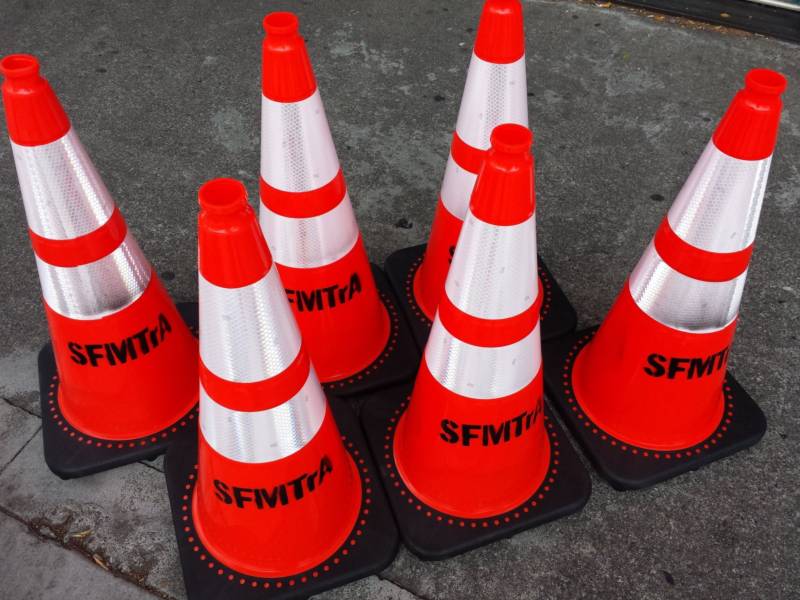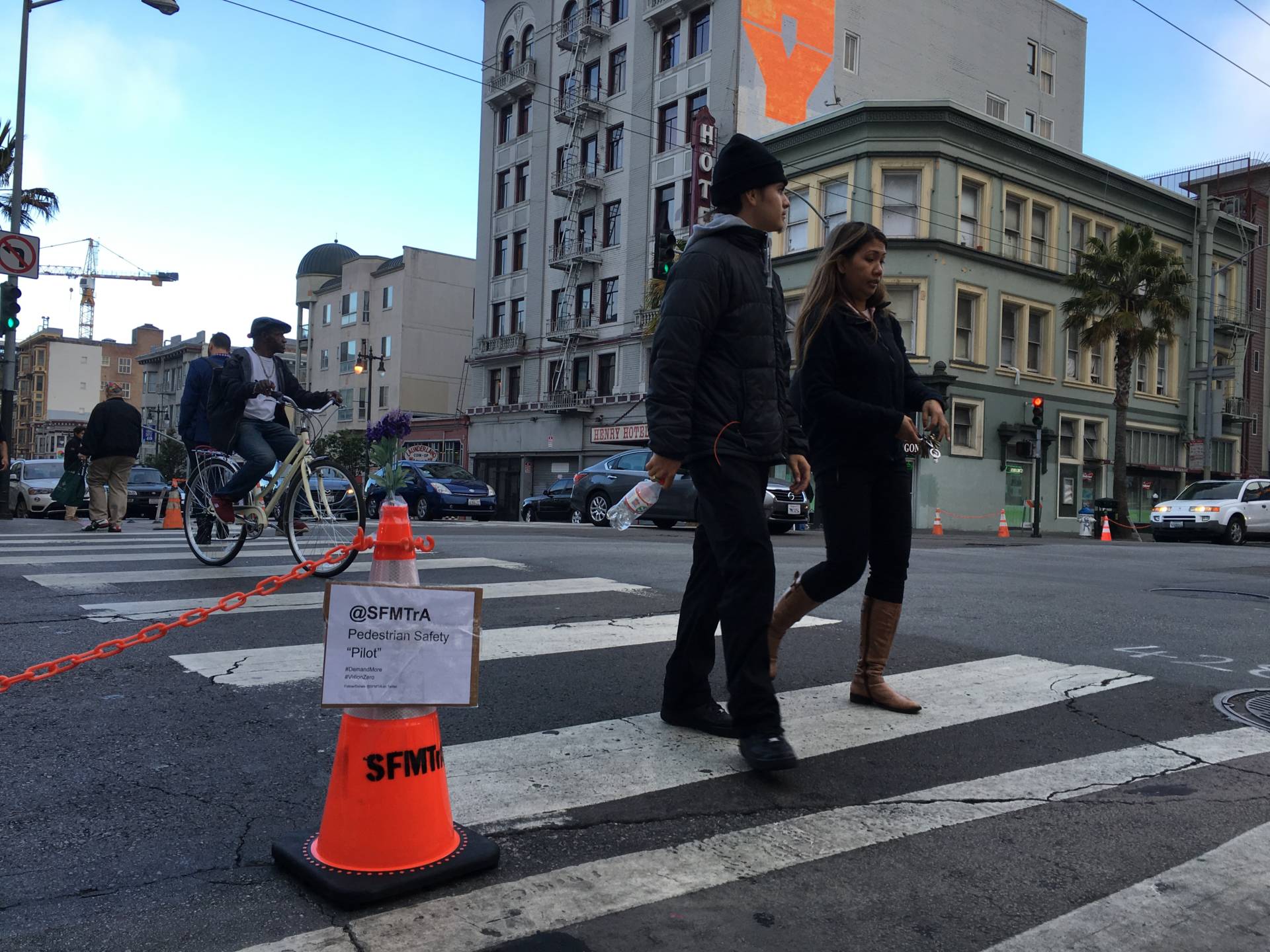The activist group, which says it has no leaders, has held a few gatherings, one of which drew Brad McManus, a 27-year-old software programmer and bike commuter who witnessed the collision that killed Slattery. He says that incident, which involved a driver who sped through a red light, turned him into a bike activist. Shortly after the collision, he wrote an open letter to Mayor Ed Lee.
"It's become really clear to me, after seeing that crash, that I need to speak up about this. It's something that I largely didn't really care about," said McManus, who adds that he went back to the scene to study the intersection and has become "obsessed" with safe streets issues.
"I am feeling a real sense of urgency on this cause. I want the city and tacticians such as the SFMTrA to be making incremental improvements so that we can start making our streets safer today," he said.
Though he has not taken part in an action, McManus is planning to donate money to support the SFMTrA's work.
The group has gotten support from Supervisor Jane Kim, among others.
"I think it's great what they're doing," said Nicole Ferrara, executive director of Walk San Francisco. "The group is looking at some of the inadequacies of our streets and how simple things like cones ... can start to make our streets safe."
Street safety activists have criticized Mayor Ed Lee and city transportation officials for what they've characterized as an inadequate response to pedestrian and cyclist deaths -- criticism that reached a crescendo after the deaths of Miller and Slattery in June.
That tone changed somewhat last week after Lee announced he was "accelerating" some Vision Zero projects and ordering improvements in the areas where the two cyclists were recently killed. They include protected bike lanes on Seventh and Eighth streets and improvements on JFK Drive in Golden Park. The San Francisco Bike Coalition called it a "bold commitment."
As to the guerrilla street cone project?
Paul Rose, a spokesman for the SFMTA, said the cones would have to be removed because they might cause confusion and because only the transportation agency and its contractors are authorized to place infrastructure on the streets.
"We hear the calls for better bikeways and we couldn't agree more," said Rose. "We do know that we can do more and do it better and faster, and we're getting there."
Rose said that since 2010, when a judge lifted an injunction that had stalled a city plan for improved bike infrastructure, the agency has installed more than 13 miles of protected bikeways and 14 miles of buffered lanes.
Despite that progress, the San Francisco Transformation Agency activists say much more needs to be done -- especially when it comes to making the city's many high-injury corridors safer. That's why they plan to continue their guerrilla street actions.

